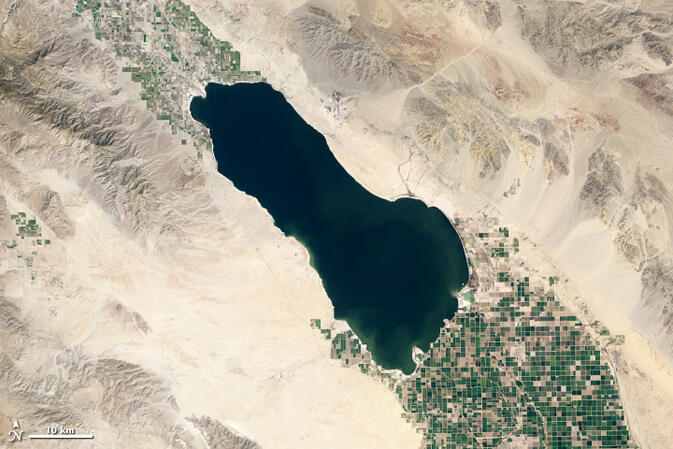Roadmap for protecting bird habitat at the Salton Sea

The Salton Sea is one of the most critical inland wetland habitats for birds along the Pacific Flyway. It is also one of the most imperiled. Diversions in recent years have caused water levels at the Salton Sea to steadily decline, and this has had a significant impact on habitat.
In response to the situation, the State of California is preparing a plan for the future management of the Salton Sea that addresses both the loss of habitat and the public health danger of windblown dust. To support this process, Audubon California, Point Blue Conservation Science, and Cooper Ecological Monitoring, Inc. recently modeled the use of bird habitat at the Salton Sea using data collected in 1999 and 2015 and submitted a report to the State in November 2016.
Download the complete report here.
This report serves as a guide for the State to support the ecologically important functions that the Salton Sea provides for birds, and understand the important role that habitat can play in mitigating dust on the playa surrounding the Sea.
Key conclusions:
- Five key habitat types are used by birds at the Salton Sea: playa; mudflats and shallow water; mid-depth water; deep water; and permanent vegetated wetlands.
- Birds used approximately 58,000 acres of habitat in both 1999 and 2015. This habitat acreage, specified in our report by type, can be interpreted as the minimum amount of habitat needed in the future to support bird populations.
- Four factors appear to be strong drivers of bird use of Salton Sea habitat: amount of shallow water, sediment composition, amount of open water, and proximity to rivers and river mouths.
- This study did not quantify the effects of selenium, salinity, water temperature, water body size, food resources, and flyway impacts. Of these, salinity is a crucial factor for birds, particularly in how it relates to food resources for birds. The study includes information about the way in which certain species tolerate salinity.

Habitat types and indicator species
Surveys and scientific literature identify five major types of habitat for waterbirds at the Salton Sea, and suggest indicator species that were used in this study.
Playa: Includes the alkali flats and dry barnacle and sand beaches of the exposed sea bed and shoreline Its bird community is represented by the Western Snowy Plover, which exploits these areas within 1km of the water’s edge for both breeding and over-wintering. Other birds include nesting American Avocet and Black-necked Stilt.
Mudflats and shallow water: Occurs along the immediate edge of the Salton Sea (as well as in off-sea impoundments), often where wind influence forms small waves and small fluctuations in water levels throughout the day. Six indicator species are American Avocet, Marbled Godwit, dowitcher, Least Sandpiper, Western Sandpiper, and Dunlin.
Mid-depth water: Used by the largest waders (herons and egrets) and certain waterfowl that forage on vegetation, invertebrates, or small fish, and is found just beyond the mudflats and shallowest bands of water and in constructed wetlands. Indicator species include two locally-common dabbling ducks, the Northern Shoveler and Gadwall, and Snowy Egret.
Deep water: This is the deepest band of water in the Salton Sea, where the larger fish (including adult tilapia) and essential marine invertebrates are found. Indicator species are the fish-eating Double-crested Cormorant and American White Pelican, as well as Eared Grebe and Ruddy Duck, which dive for a variety of invertebrates.
Permanent vegetated wetlands. Limited in extent and confined to areas of freshwater input at the edge of the Salton Sea, including agriculture drains and the mouths of the rivers that flow from agricultural areas. Bird diversity is high, and indicator species are the Least Bittern, Common Gallinule, Virginia Rail, and Sora.
How you can help, right now
Get Audubon CA in Your Inbox
Our newsletter is fun way to get our latest stories and important conservation updates from across the state.
Donate to Audubon
Help secure the future for birds at risk from climate change, habitat loss and other threats. Your support will power our science, education, advocacy and on-the-ground conservation efforts.
HOTSPOT: Flyover of California's Birds and Biodiversity
California is a global biodiversity hotspots, with one of the greatest concentrations of living species on Earth.




